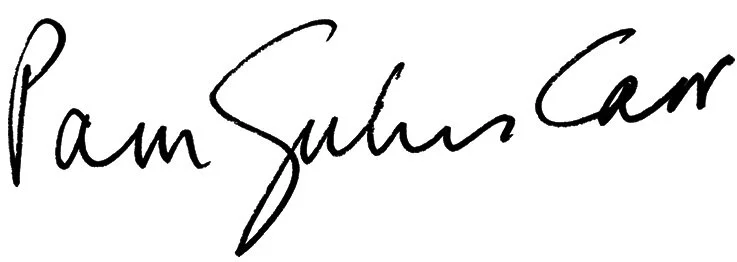Current Work
““…boundaries between animals and human worlds are indistinct and fluid. This is a traditional African vision, but it is also something very modern that we are only beginning to understand in western countries. We are not masters of nature – we are part of it.”
Pam Guhrs-Carr grew up in the rural Kunda area of the Luangwa River Valley in Zambia, where she still lives today. Her painting and sculpture find common ground between African and western art and feminism through the traditions and stories of girls’ coming of age across both cultures. She explores the space between physical and spiritual, darkness and light, life and death, human and animal, to create work that can be read across cultural boundaries.
Her themes explore:
porous boundaries between the human and animal worlds
transience and change
terror and sublime joy
forests and their metaphors of birth and death
Subject matter
Cyphers - Symbols and images which recur in the rock art relating to Kunda matrilineal women’s initiation, sometimes drawing them in pitch while blindfolded in order to release the unconscious gesture and the underlying emotional aspects of the form.
Leopards - A central Kunda story about a young woman attacked by a leopard and then killed by a man with an axe echoes many northern European folk tales like Little Red Riding Hood.
Forest - or wilderness - the metaphorical place in many stories of psychological change and life and death changes.
Hyenas - a common Zambian belief is that they can transmute to humans.
Spirit Lions - Spirit lions - are bound up in beliefs that spirits of past chiefs may temporarily take up the form of lions.
Transformation figures - Archetypal themes of forests, wilderness, and carnivorous violent predators, alongside themes of capture and release, artist as alchemist, image-making as initiatory, alchemical practice.
Blindfold drawings
Using Indian ink and a large brush she draws these images repeatedly with a tutored hand and then later with eyes closed, until the figure becomes a cipher. These gestural images resemble a type of calligraphy which she then enlarges onto a board in a manner related to western technical drawing, by a series of grids. The resulting drawings are completed in tar with a large brush.
Closing the eyes releases the unconscious gesture and the underlying emotive aspects of the form.
Creates a personal calligraphy of cyphers - the replication of painting and repainting simplifies the sign in a Zen-like way until it is personalised.
Materials of tar and lime
Reflect chemical changes in the materials themselves
Are organic and inorganic - living and dead



